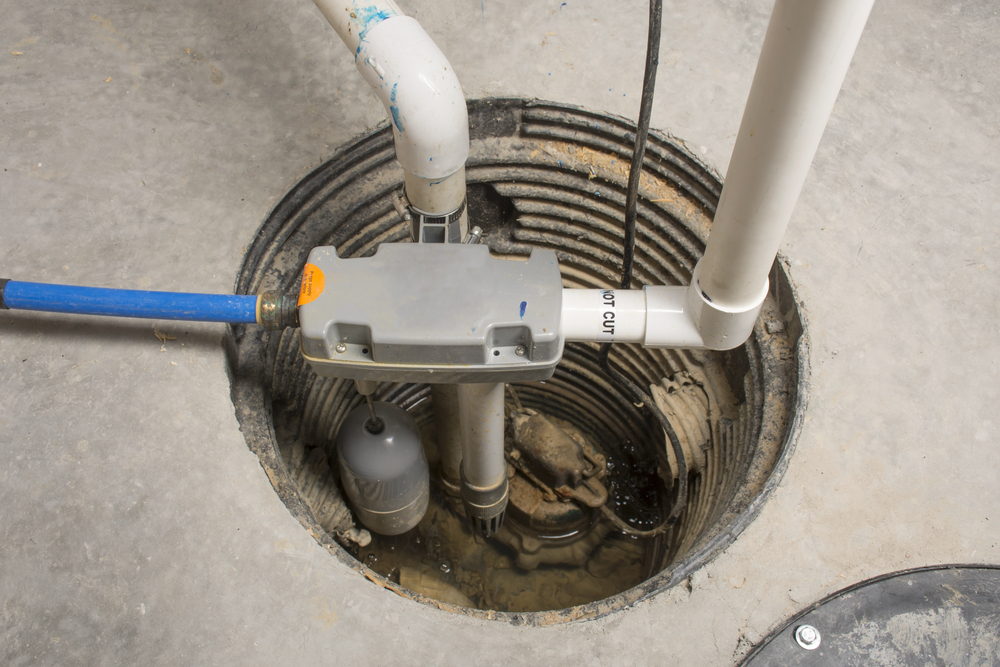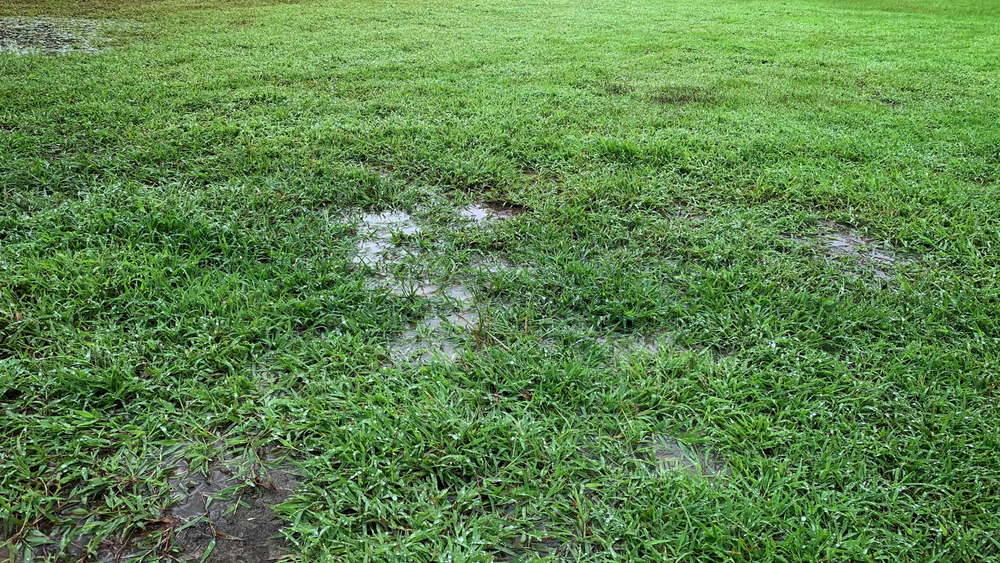That damp feeling in your basement or crawl space can really put a knot in your stomach, can’t it? You worry about stored belongings, potential mold growth, and maybe even the structural health of your home. It’s a common headache for homeowners, but there’s a reliable solution: a sump pump installation.
Dealing with unwanted water under your house is stressful, especially basement water that risks damaging valuables. A properly functioning sump pump system, achieved through professional sump pump installation, is often the best defense against water intrusion and the headaches that come with it. Protecting your home is always a good idea.
What Exactly Is a Sump Pump?
Think of a sump pump as your home’s personal bodyguard against groundwater invasion. It’s a specialized pump designed specifically for removing water that collects in a sump pit or basin, usually located in the lowest part of your basement or crawl space. Its main job is simple but critical: keep that area dry and prevent flooding.
Sump pumps generally work automatically when needed. Without one, water might just sit there, potentially damaging stored items like holiday decorations or furniture, and fostering mold growth which can ruin building materials and window treatments. A sump pump actively works to move that water out and away from your home’s foundation, providing basement drainage solutions.
How Does a Sump Pump Actually Work?
The process begins within a specially designed hole called a sump pit or sump basin. This pit acts as a collection point for excess groundwater or rainwater that seeps in around your foundation, potentially due to drainage problems or heavy rainfall. As the water level in the pit rises, it triggers the pump.
Most sump pumps use a float switch, similar in concept to the one in your toilet tank. When the water lifts the float to a predetermined level, the pump motor activates. It then draws the water out of the sump pump basin and pushes it through a discharge pipe, safely directing it away from your house.
Why Would I Need a Sump Pump Installation? (Signs You Need One)
Maybe you’re wondering if this is something your home really needs. It’s a fair question, especially if you haven’t experienced major basement water issues yet. There are several clear signs that point towards needing a sump pump system, making installing sump pump components a smart move.
Do you notice persistent dampness or musty smells coming from your basement or crawl space? Have you seen water stains on the walls or the basement floor down there? These are significant indicators that water is infiltrating where it shouldn’t.
Other reasons to strongly consider a pump installation include:
- Your home has flooded before, even just once.
- You live in an area known for heavy rainfall or snowfall, leading to frequent wet conditions.
- Your property sits on flat ground or in a low-lying area with poor natural drainage, possibly related to downspout drainage issues.
- The local water table is high (meaning groundwater is close to the surface); asking neighbors or checking local data can confirm this.
- Your home has a finished basement you want to protect from water damage.
- You’re planning to finish your basement in the future and want to ensure a waterproof basement environment.
Even if you only experience occasional minor seepage, installing a sump pump is a proactive measure. It’s often much less expensive than dealing with major water damage repair later, which can affect everything from flooring and hardware heating systems to electrical components. You can investigate your area’s general flood risk through resources like the FEMA Flood Map Service Center.
Types of Sump Pumps
When looking into sump pump installation, you’ll mainly come across two types: submersible sump pumps and pedestal sump pumps. Each has its own set of characteristics and applications. Understanding the difference helps you figure out what might work best for your specific situation and pump installation needs.
Submersible Sump Pumps
As the name suggests, a submersible sump pump sits directly inside the sump pit, submerged in the water it pumps out. The motor and pump are contained within a single, waterproof housing. Because they’re underwater and typically covered by a lid, submersible pumps tend to operate much quieter than pedestal pumps, a benefit in a finished basement.
Submersible pumps are often more powerful for their size and take up less visible space since the entire unit is contained within the pump basin. However, because the motor is constantly surrounded by water, its lifespan might be slightly shorter if lower-quality materials are used, although modern designs are very durable. Accessing them for service can also be a bit messier, requiring pulling the entire unit out of the often murky water.
They are generally preferred for higher volume pumping needs and where quiet operation is desired. A quality submersible pump provides reliable protection.
Pedestal Sump Pumps
With a pedestal sump pump, the motor sits up high on a column or pedestal, positioned above the sump pit and out of the water. Only the base of the pump, containing the inlet or volute, sits down in the basin near the bottom. This design keeps the motor dry, which can sometimes contribute to a longer motor life and potentially easier servicing.
Because the motor isn’t muffled by water or enclosed within the pit, pedestal pumps are generally louder when running compared to submersible pumps. They are often less expensive upfront, making them a budget-friendly option for some homeowners. Their above-pit motor also makes inspection, service, and repairs typically easier and cleaner than dealing with a submersible pump.
Choosing between a submersible sump and a pedestal sump often comes down to your budget, noise tolerance, sump basin size, performance requirements, and how much maintenance access matters to you. Many professionals lean towards quality submersible pumps for their robust performance and quieter operation, especially suitable for homes with a finished basement.
DIY Sump Pump Installation vs. Hiring a Pro
You might be pretty handy around the house and think, “Can I just install this myself?” While it’s technically possible for someone with significant plumbing, excavation, and electrical skills to attempt installing sump pump components, sump pump installation is generally best left to the professionals. There’s a lot that can go wrong if it’s not done correctly, potentially leading to bigger drainage problems.
Consider the risks of a DIY attempt. Choosing the wrong size or type of pump (submersible pump vs. pedestal pump) could mean it gets overwhelmed during heavy rain or burns out prematurely. Placing the sump pit incorrectly might mean it doesn’t effectively capture incoming basement water. Improper plumbing, especially the check valve installation or discharge pipe routing, can lead to leaks or backflow, negating the pump’s purpose.
Most importantly, mistakes with the electrical wiring or connection to the power source can be genuinely dangerous, posing risks of shock or fire. Professionals understand local building codes, safety requirements for electrical flooring and hardware heating interfaces, and possess the necessary tools, like potentially a demolition hammer for concrete work. They have the experience to correctly assess your specific situation, select the appropriately sized pump, install the sump basin securely (perhaps using filter fabric for longevity), connect the PVC pipe discharge line properly, and handle the electrical connections safely.
Hiring a reputable waterproofing company or plumber means you get experts who know how to do the job right the first time. They can evaluate if other solutions like a french drain are needed in conjunction with the pump, guarantee proper sump pump drainage, ensure electrical safety, and often provide warranties on both the equipment and their labor. This provides reliable protection and the peace of mind knowing your investment is working correctly.
Choosing the Right Sump Pump
While professionals help determine the best pump for your pump add project, it helps to understand the factors involved. Pump capacity is primarily measured in horsepower (HP) – common residential sizes are 1/4 HP, 1/3 HP, and 1/2 HP, though larger units exist. The right HP depends on factors like the square footage of your basement or crawl space, the vertical distance the water needs to be pumped (known as the ‘head’), and the volume and frequency of water intrusion you typically experience (e.g., frequent wet conditions vs. occasional seepage).
Material construction also significantly impacts durability and longevity. Pumps generally feature housings made of cast iron, stainless steel, or thermoplastic. Cast iron is typically the most durable and helps dissipate heat but is heavier and more expensive; thermoplastic is corrosion-resistant and lighter but may not be as impact-resistant or long-lasting under heavy use.
Features like the type of float switch can also be important; vertical float switches are often considered more reliable in narrower sump pits compared to tethered floats, which require more space to operate. Considering these factors helps ensure you get a pump that adequately protects your finished basement or storage area.
Essential Sump Pump Maintenance
Installing a sump pump isn’t a one-time task; like any mechanical system safeguarding important areas (think appliances bath areas, laundry rooms), it needs regular checks and maintenance to keep working reliably. Luckily, most maintenance tasks are fairly simple and can prevent unexpected failures during extreme weather. Keeping up with maintenance is a really good idea.
At least a few times a year (especially before anticipated rainy seasons or spring thaws), you should perform these checks:
- Test the Pump: Pour a bucket or two of water into the sump pit. Watch to confirm the pump turns on automatically, effectively removes the water through the discharge pipe, and shuts off properly once the water level drops. Listen for smooth operation while it’s running.
- Clean the Pit: Remove any visible dirt, gravel, leaves, or other debris that might have collected in the sump basin. This debris could potentially clog the pump’s intake screen or interfere with the float switch mechanism.
- Check the Float Switch: Ensure the float moves up and down freely without catching on the pump, wires, or basin walls. Obstructions can prevent the pump from turning on or off correctly.
- Inspect the Check Valve: Listen after the pump shuts off. You shouldn’t hear water rushing back into the pit; if you do, the check valve might be faulty or installed incorrectly and needs attention.
- Clear the Discharge Line Exit: Go outside and locate where the discharge pipe terminates. Make sure the opening isn’t blocked by dirt, leaves, mulch, ice in winter, animal nests, or covered by a misplaced paver stone. Water needs an unobstructed path to flow away from your foundation.
- Test the Battery Backup: If you have a battery backup system, test it periodically according to the manufacturer’s instructions. This usually involves unplugging the primary pump and testing the backup pump’s operation, ensuring the battery holds a charge and the pump runs.
Regular upkeep significantly extends the life of your pump and provides peace of mind knowing it’s ready for wet conditions. Don’t forget about materials you might need for cleaning or minor fixes; you can often find these at a local hardware store or garden center.
How Long Do Sump Pumps Last?
On average, a primary sump pump might last about 7 to 10 years. However, this lifespan can vary greatly depending on the pump’s quality (e.g., cast iron vs. plastic components), how frequently it operates (which depends on your local water table and weather), and how well it’s maintained. A pump in a basement with frequent wet conditions that runs constantly will naturally wear out faster than one in a drier environment used only occasionally.
Signs that your pump might be nearing the end of its functional life include unusual noises (grinding, high-pitched whining, excessive rattling), increased vibration during operation, running for unusually long periods, cycling on and off very frequently (short-cycling could indicate a check valve or float switch issue), or visible rust and corrosion on the casing. If your pump is approaching the 7-10 year mark, it’s wise, with peace of mind knowing you’re protected, to consider a proactive replacement rather than waiting for it to fail unexpectedly during a storm, potentially causing significant water damage.
Common Sump Pump Problems
Even well-maintained sump pumps can sometimes encounter operational issues. Being aware of common problems can help you troubleshoot minor situations or recognize when it’s necessary to call a professional for repairs. Some frequent issues homeowners encounter include:
- Power Failure / No Power Source: The most obvious reason a standard pump stops working. This strongly underscores the importance of having a reliable battery backup system, especially during extreme weather or areas prone to power outages.
- Clogged Pump Intake or Switch: Debris like silt, gravel, or small objects washed into the sump pit can jam the pump’s impeller or intake screen, preventing it from pumping water. Debris can also obstruct the float switch, causing it to get stuck in the ‘on’ or ‘off’ position.
- Overwhelmed Pump: During exceptionally heavy rainfall or rapid snowmelt, the sheer volume of incoming water might exceed the pump’s GPM (gallons per minute) capacity, especially if the pump is undersized for the conditions. A secondary pump or a battery backup can provide supplemental capacity.
- Frozen or Clogged Discharge Line: If the discharge pipe outside the house becomes blocked by ice, dirt, leaves, or debris, the pumped water has nowhere to go and can back up into the basement or cause the pump to overheat. Ensuring the discharge path stays clear is essential for sump pump drainage.
- Faulty Check Valve: If the check valve fails or gets stuck open, water remaining in the discharge pipe will flow back into the pit after the pump cycles off. This leads to the pump running much more often than necessary (short-cycling), increasing wear and energy use.
- Pump Runs Continuously: If the pump won’t shut off, it could be due to a stuck float switch, a failed check valve allowing constant backflow, or an undersized pump struggling against continuous heavy water inflow.
- Motor Malfunction: Like any motor, a sump pump’s motor can eventually fail due to age, overheating, or internal component failure, often preceded by humming or grinding noises.
Regular checks can help catch many of these issues early.
Conclusion
Dealing with basement or crawl space water is a serious concern for many homeowners, impacting storage, air quality, and potentially structural integrity, but it’s a solvable problem. A professionally executed sump pump installation provides a vital line of defense, actively removing water to prevent flooding, pervasive moisture damage, and unhealthy mold growth. While the basic concept is straightforward, the specifics of choosing the right submersible pumps or pedestal pumps, ensuring proper sump pit placement, and achieving a safe, effective pump installation require considerable expertise.




